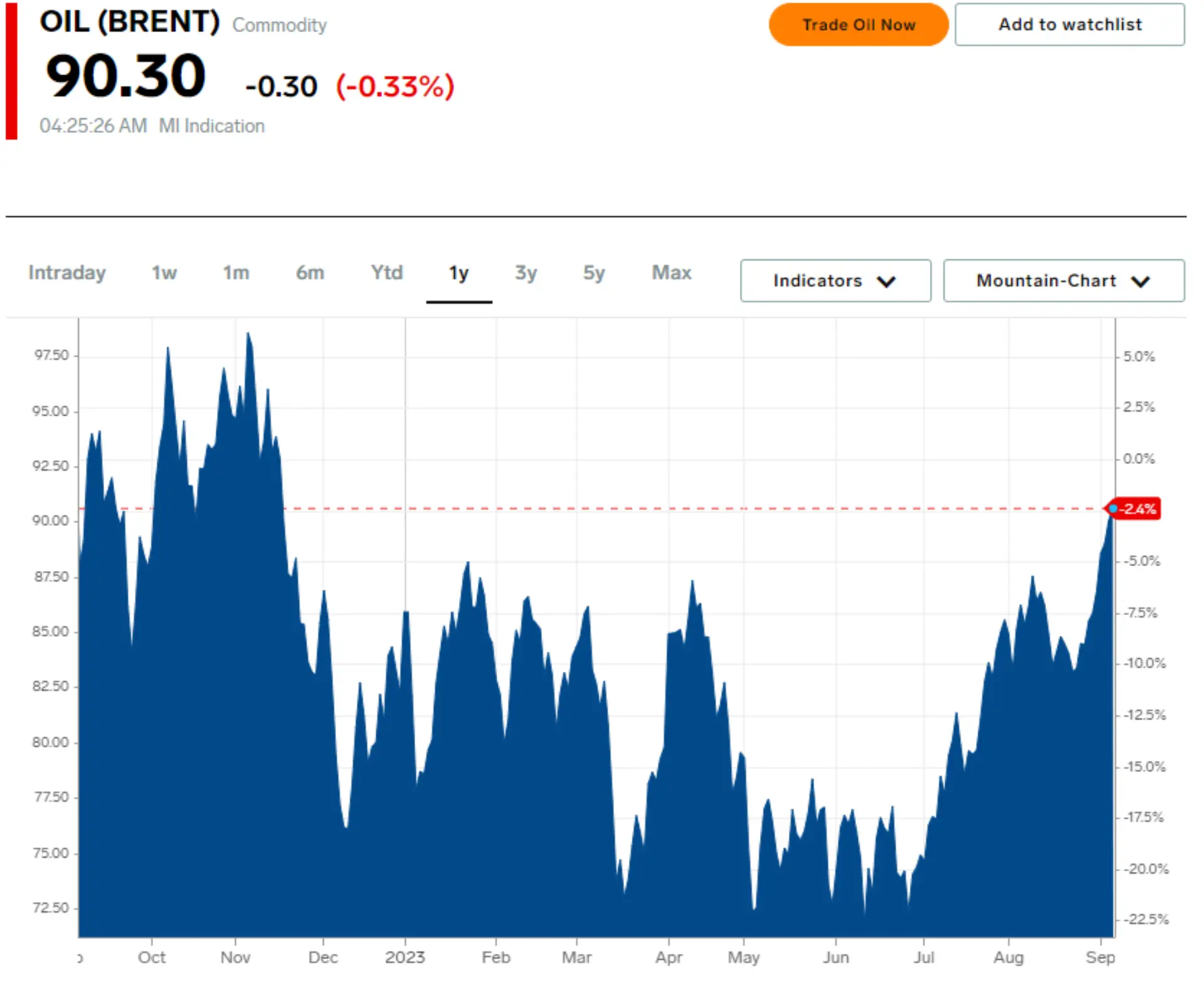Saudi Arabia maintains its strategy of reducing oil production, and following in the footsteps of Russia, has confirmed the decision to cut production again for three months, something that will have an impact on an increase in fuel costs.
This means that the Arabs will extend the cut of one million barrels per day until December when the forecasts of the rest of the countries indicated that it would be only one more month.
This situation is being felt at gas stations, where in recent weeks the prices of diesel and gasoline have risen again substantially. Still far from the highs of last year, when in November, diesel reached 2 euros per liter.
But the situation seems to be taking the same direction again since we are at the gates of winter again with oil prices amid their upward phase, which means that gasoline is practically at the same level as last year at this point, just before the October-November climb.
In addition, these three months of extension of the cuts by Saudi Arabia, which are added to the cut of 300,000 barrels per day from Russia, occur just at the moment in which international demand is reaching historical peaks, which has caused that world barrel prices have to readjust, picking up during the summer months.
Currently, the barrel of Brent stands at 90.32 dollars, after experiencing a rise of almost one and a half points. With this critical scenario in hand, it is expected that the price will continue to rise and it is not ruled out that a sudden increase could occur at any time that would jeopardize not only the supply of crude oil but also the recovery of the economies.

This increase does not only have an impact on the hard process of having to go through the gas station. It also has a strong influence on the cost of almost everything we buy, and therefore on the CPI. Data from the European Union Oil Bulletin show a clear upward trend in the price of both diesel and gasoline over the last eight weeks, in which both fuels accumulated increases of 12% and 8%, respectively. The liter of diesel has gone from paying 1,437 euros at the beginning of July to reaching 1,612 euros in the last week, its highest level since mid-February. In parallel, the price of gasoline has risen from 1,591 to 1,721 euros per liter, the highest figure so far this year.
A dangerous exposure to some fuels that, as we are seeing graphically every time we go to the supermarket to do the shopping, is in the hands of a few states that can manage the prices at will, and therefore, can decide whether to press the neck of Western economies to their liking.











